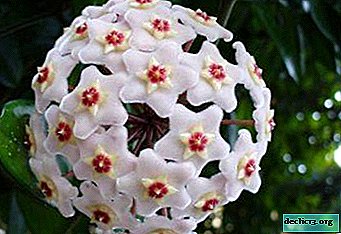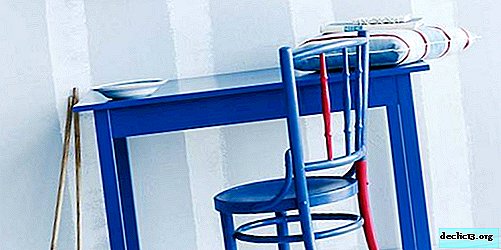The specifics of growing gerberas and their effective care
In the family of asters, there is another representative of stunning beauty - this is a gerbera, which has about 70 species.


Bright flowers of various shades came to us from the tropics and subtropics of Africa. The appearance of the name to this day is controversial. According to some sources, the word came from the Latin "herba", which means grass. According to other information, the word was derived from the name of the German botanist Traugott Gerber.


Features of the flower and its external signs
The flower belongs to perennial herbaceous plants. Juicy leaves have an elongated shape and a bright green color. They reach a length of 35 cm and are collected at the root in a socket.


The peduncle is completely devoid of leaves and grows up to 80 cm. The diameter of the flowers is within 15 cm. There are varieties with double petals and simple ones. In this case, a simple gerbera can be compared with a camomile, and terry with aster. As a fruit on a gerbera, an achene matures.

Unfortunately, year-round cultivation of gerbera in open ground in the Russian climate is impossible. The flower loves heat very much and grows only in the summer. The solution will be to grow gerbera on the lawn as an annual plant or use pots to create the necessary mobility.


In addition, the flower can be grown in greenhouses and cut as necessary for home decoration.


Since most varieties are similar to chamomile, the plant has received the second name "transvaal daisy" or "transvaal daisy". Gerberas exist in a huge variety of colors and shades. An exception will be the blue color, which cannot be obtained naturally.


Variety of types and varieties of gerbera
At the moment, there are about 1000 subspecies of the plant. They differ in size, color and shape. Reed corollas at marginal flowers can be:
- yellow;
- orange
- pink;
- white
- red.
Various combinations of these flowers on one plant are also possible.


There are varieties with a black core. They look especially mysterious and original in the composition of bouquets and flower beds.


Most varieties grown today are hybrid. In the classification of room subspecies, most often you can find a dwarf variety of Gerbera Jameson. It is this variety that is cut for sale in stores.


A flower of this variety reaches a diameter of 10 cm and pleases customers with a large number of shades. The core usually has a color different from the petals.


The cultivar most suitable for cultivation is the Festival. A specific feature of the variety are large flowers on short stems. This is an excellent plant for growing on the windowsill.


Among the most common varieties can be distinguished:
- Migar
- Aldebaran;
- Mars;
- Alcor;
- Vega;
- Jupiter;
- Algol.

Varieties Alcor and Aldebaran reach a height of 50 cm. The plant is distinguished by small flowers up to 8 cm in diameter.


Mars reaches a diameter of 11 cm. The flower stalk grows to 70 cm. The rest of the above varieties are also decorated with large flowers on high peduncles.


Effective Gerber Care
Adequate care will provide a bright long flowering. The main points in the list of necessary procedures will be:
- bright place;
- moderate watering;
- nutrient soil.


As for the place, it should be adequately lit, but the gerbera should be protected from scorching direct sunlight. It is good to use window sills on the south side, where shading can be arranged during the hours when the sun is most active. At the same time, during the cold season, additional illumination is welcome.


Indoor varieties must be regularly taken out into the air. This can only be done in the summer. Sensible temperature fluctuations are harmful to the plant, especially during flowering. If possible, it is necessary to maintain 22-24 degrees.

As you bloom, you can gradually let the temperature drop and by the winter season you can reach 12-14 gr.


Gerbera needs to be watered according to certain principles. During the growing season, irrigation should be moderate. Soft water at room temperature will be most suitable. It is necessary to prevent an excess of moisture, as this can cause the development of fungal diseases.

You should also avoid getting water into the outlet from the leaves. This can adversely affect the appearance of the flower. During the dormant period, watering is reduced. At the same time, overdrying of the earth should not be allowed.

In the best way, a gerbera feels itself in a humid environment similar to the conditions of the tropical homeland of the plant. This can be achieved by placing the pot in a large tray with wet expanded clay, pebbles or moss. In this case, the rhizome of the plant should not come in direct contact with water. Spraying a gerbera can only do harm.


If gerbera is grown indoors, then you need to transplant it every year. To do this, each time you need to choose a larger pot than the previous one. Preliminary, it is worth providing good drainage.


The composition of the soil provides neutral acidity to the roots of the plant. In this case, the substrate should be nutritious and light. If you mix the soil yourself, then you need to include in its composition:
- 1 part of leafy soil;
- 1 part of peat land;
- 1 part of sand;
- some pine bark.

Feeding is also part of the necessary care. During the growing season, you can use complex fertilizer. You need to make it every 2 weeks. During the rest period, top dressing should be stopped.


In order for the gerbera to bloom profusely and brightly, it is necessary to remove wilted peduncles in a timely manner. This is due to the fact that they will rot and inhibit the growth of new shoots. In addition, gerberas can harm diseases and parasites. The spider mite creates the conditions for yellowing and falling of leaves. This may be evidence of insufficient moisture in the soil and air.

Powdery mildew that appeared on the flower may indicate an excess of nitrogen in complementary foods, excessive humidity and sudden changes in temperature. In addition, a lack of moisture leads to the appearance of aphids and whiteflies.

There are certain difficulties with growing gerberas, but if you give proper attention to these flowers, the reward will be large flowers, which bright spots will decorate a flower bed or window sill in the house.

















